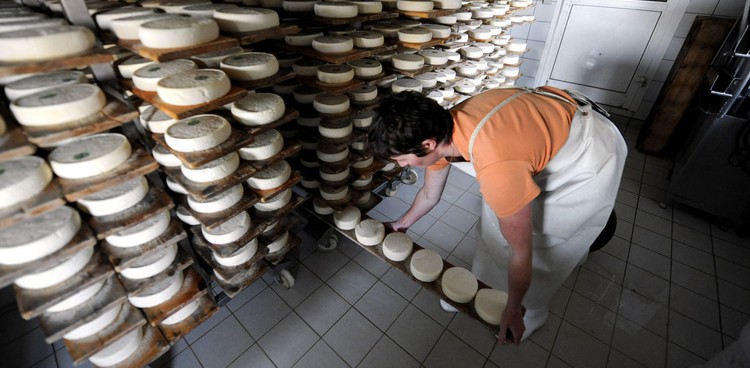
No matter how many times you open and close the door of the average American refrigerator, there’s one food group that is probably not going to magically appear: unpasteurized dairy products.
The debate regarding pasteurization, particularly in the United States, is a complicated one, and often riddled with misunderstandings of what “raw” really means. As mass-production within the food industry has exploded, raw milk has indeed been at the center of serious health concerns. Unsanitary conditions inevitably lead to contaminated milk, which can carry dangerous bacteria including E. coli, Salmonella, and Staphylococcus. So, our historical fear of raw milk is not without a legitimate foundation, but it has also created an automatic distrust of the otherwise delicious unpasteurized possibilities of dairy.
In recent years, a movement towards local dairy production has opened the eyes of many cheese lovers, and an appreciation for cheese made with raw milk has been revived due to the rich taste that it is said to impart. This is where the misunderstanding of “raw” comes into play: although pasteurization effectively kills every bad bacteria, it also kills many of the good bacteria as well, which can compromise the natural flavor of the cheese. In spite of our tendencies to purify bacteria into submission, there are many cheese enthusiasts who would argue that what we really need is a pasteurization intervention. In an interview with NPR, Bronwen Percival, a cheese buyer for London’s Neal’s Yard Dairy, said, “Instead of having a war of annihilation on microbes, we should be working with them.”
When discussing the topic of raw milk cheeses, Percival points towards the findings of French scientists. Using a combination of research and traditional cheese making practices, the French government recently published a technical manual about how to make raw milk (and therefore raw milk cheese) much safer for consumption, based on a deep understanding of milk microbiology. Similarly, Rachel Dutton, a Harvard researcher who studies microbial ecosystems, said that we have only recently begun to fully understand the levels of dairy microbiology, thus allowing us to more competently work with the organisms that exist within the cheese itself. As Dutton said, “every organism could potentially have different contributions to the flavor,” so killing as much bacteria as possible through pasteurization is significantly limiting our experience with cheese.
Percival, who successfully led the Kickstarter effort to raise money in order to translate the French technical manual into English, said that a better understanding of raw milk will not only enhance the flavors of many of our favorite cheeses, but will ultimately lead to a more informed discussion about pasteurization practices. Decoding French scientists’ secrets to safer raw milk may change the future of American cheese production — hopefully for the best.
Photo Credit: Jean-Pierre Clatot/AFP/Getty Images



